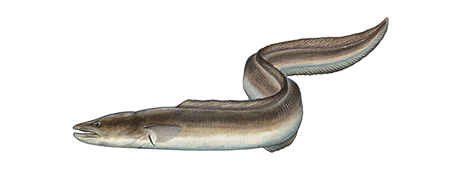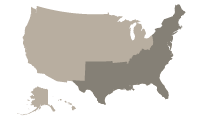
Conger
A conger's great strength, sharp teeth, ability to swim backward, and propensity for remaining in or near cover make it a formidable foe.

Region
South, Northeast
Catch ease
Hard
Habitat
Bay, Ocean
How to identify a Conger
The conger is a large eel known to reach a maximum length of 9 ft and a weight of 143 lbs. It is easily distinguished from the moray eel by the presence of pectoral fins, which the moray lacks. It also has a longer snout, its upper jaw is slightly longer than its lower jaw, the head is narrower in appearance, and the dorsal fin does not extend quite as far forward as in the moray.
